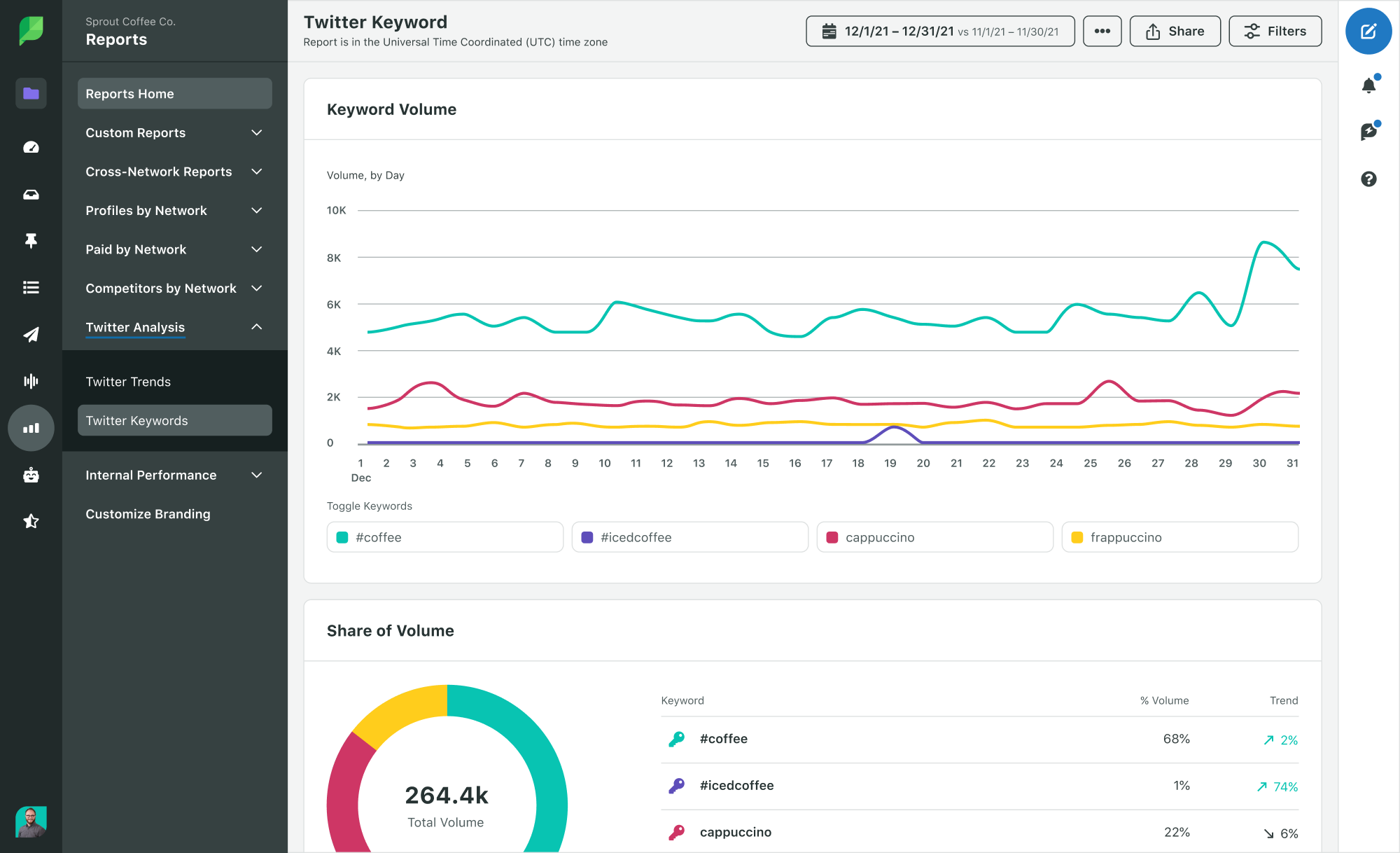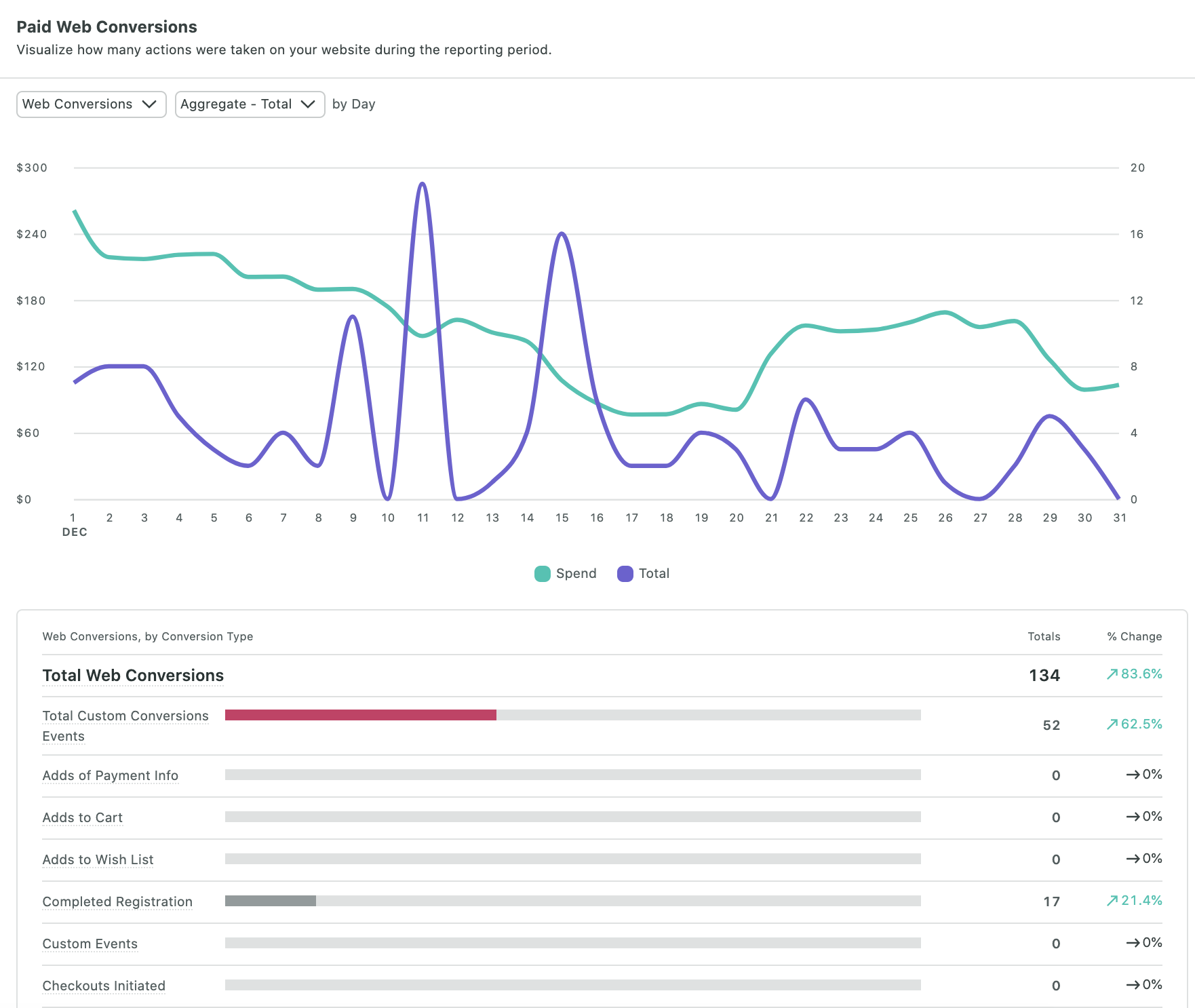How to prove (and grow) your B2B social media ROI
Written by Brent Barnhart
Published on May 3, 2021
Reading time 6 minutes

Social media is a crucial channel for B2B marketers.
That said, are you able to prove the results of your efforts in plain English?
Although social is a prime place for content distribution and lead generation, only 15% of marketers use social data to measure their ROI.
Yikes.
Just like any other marketing channel, you need to be able to spell out why social is worth investing in. Doing so can ultimately boost your social media budget and secure more resources for future campaigns.
In this guide, we’ll break down exactly how to measure your B2B social media ROI and grow it for the long-term.
How to measure your ROI from B2B social media in 5 steps
First thing’s first: you need to be able to highlight what you’re getting out of your B2B social strategy.
Proving the value of social as a marketing channel means not only minding how you track your efforts but also how you approach your content strategy.
1. Focus on the appropriate metrics and KPIs
While we all know that metrics matter, it’s easy to get lost in the weeds when there are so many numbers to track. Below are the key B2B marketing metrics that tie to your business’ goals:
Clicks
Through attribution modeling, you can source and track how many of your clicks from social media result in leads elsewhere. This includes web traffic, e-book downloads, webinar sign-ups and beyond.
In short, B2B marketers should not only track how many clicks they’re scoring, but also what happens once people click through. You can then determine whether your social content results in legitimate leads.
Interactions
Comments, shares and mentions are more than just vanity metrics. Put into context, interactions can clue you in on:
- Whether or not people are actually interested in your content
- What your customers like (or dislike) about your product and service versus your competitors
- Conversations happening around your brand (and opportunities to close leads)
Hands down @SproutSocial. Makes scheduling and managing content a breeze and has the most visually appealing, concise reporting tools. Could not recommend more!
— Anna Laura (not Anna) #SMW (@annalaurahhh) February 19, 2021
For example, a flood of interactions could be a result of positive buzz or customer service concerns. How you engage with social customers has a direct impact on your ROI as customers are retained or lost depending on how you interact.
Share of voice
Much of measuring B2B social media ROI is about looking at your campaign performance versus your competitors.
Share of voice digs into how much your brand is mentioned, how you stack up against competitors and whether or not those mentions are positive. Through social listening tools like Sprout Social, you can see where you stand when it comes to conversations around your industry:

2. Measure your social media performance against other marketing channels
Again, B2B companies have choices in terms of marketing channels.
Email. SEO. PPC. Chances are, social media isn’t your sole focus.
That’s why it’s important not to look at your social media ROI in a vacuum. Instead, you should compare the resources and results allocated to social media versus other marketing channels.
For example, consider tracking your social media traffic via Google Analytics to see how many leads come to your website from social and how they behave. How does your social traffic convert versus email traffic? Which pieces of content are they most interested in?

Maybe you learn that social leads require more nurturing. Perhaps they’re only interested in specific types of content. Either way, monitoring the behavior of your social traffic can give you a bigger-picture understanding of your customers.
3. Define your performance benchmarks
Before you can improve your B2B social media ROI, you need to have a foundation of what’s “good” for your business.
Because what a high-performing post or campaign looks like in terms of clicks or conversions varies from business to business. This again highlights the importance of tracking social data and other channels side-by-side so you can come up with some baseline data.
1,000 clicks? 5% conversions? 2% engagement rate? They don’t mean much without a baseline.
The takeaway? You should benchmark your B2B social data over time to determine what’s typical for a campaign and if your efforts are making an impact.
4. Publish content that clicks with B2B audiences
Fact: a staggering 84% of B2B marketers use paid channels as a promotional and content distribution channel, and 72% of those marketers use social.
Perhaps the easiest way to boost your B2B social media ROI is by fine-tuning your content strategy. Publishing the right content makes you more likely to move the needle on all of the metrics we discussed earlier.
As a refresher, try to prioritize the following types of content which perform well for businesses:
- Thought leadership pieces
- Original research and infographics
- Short-form, how-to videos
- Questions and community discussions
Get a birds-eye view of your weekly and monthly tasks with Calendar View 🗓️
This new feature in Trello supports single-day and multi-day events so you can see all of your board’s cards complete with start dates, due dates, and all the details in between. https://t.co/ppFybvkxMq pic.twitter.com/pvhMSDXjOa
— Trello by Atlassian (@trello) February 24, 2021
5. Run paid campaigns and creative tests
More and more B2B brands are investing in social media advertising for a reason. A key benefit of doing so is that you can directly tie your social efforts to outcomes such as sales, sign-ups and downloads.
Although ads might not be on the table for brands with tighter budgets, smaller paid campaigns and creative testing can help you understand how to encourage your social audience to convert.

If nothing else, you can measure your organic social efforts versus your paid ones to see if there are opportunities to scale the latter.
Beating the 3 biggest challenges of measuring B2B social media ROI
To wrap things up, let’s look at ways to tackle the most common challenges associated with measuring and improving social media ROI for B2B brands.
Challenge #1: translating results of top-of-funnel marketing efforts
We’ll bite: defining the success of your top-of-funnel marketing campaigns can be tricky. Many social metrics don’t correlate directly with dollars and cents (at least not immediately, anyway).
Solution: find links between your social metrics and performance data
This cannot be stressed enough: track your data!
Is there a correlation between more clicks and shares and sustained sales over a period of time? What about traffic and on-site conversions?
For example, you could set a conversion goal in Google Analytics on a social-specific landing page to see how your traffic performs. We also recommend UTM tracking for the sake of tying your social efforts to your business outcomes over time.

Also, keep in mind that the B2B buyer’s journey takes months. Just because a social lead doesn’t make a purchase ASAP doesn’t mean they won’t do so down the line.
A combination of URL tracking and full-funnel analytics can help you identify how your social efforts contribute to your other campaigns.
Challenge #2: stakeholders don’t always understand B2B social media
Social media isn’t breaking news, but many stakeholders still don’t get it. There are plenty of critics of social media as a marketing channel who don’t see or understand its value.
As a marketer, you might run into a situation where you need to justify your social spending or make a business case for social media altogether. What then?
Solution: present your performance data in context
Marketers need to be as straightforward as possible to win over stakeholders. Doing so means highlighting your goals and spelling out how you met them. It all goes back to data.
For example, let’s say you’re using social media to support a new product launch. Showcased by the custom reporting options in Sprout, you can pull the metrics and KPIs related to the buzz you managed to build.

See how that works? Be your own advocate when it comes to the value and ROI of social media. The better your data is, the easier you can sell it to stakeholders.
Challenge #3: your social media efforts are siloed
You can’t afford to be an island if you’re responsible for B2B social media. Getting an ROI is a full company effort that shouldn’t be any single person’s sole responsibility.
Solution: share your data and communicate your expectations
Simply put, you need to take the time to talk to other marketers and departments in your organization to make sure your social efforts are aligned with your company-wide goals. Your teammates should be willing to do the same for you.
And again, the ability to quickly grab and report social data and ROI to your team is a huge point in your favor. Data sourced in Sprout is simple to understand and can be easily shared with anyone you’re going back-and-forth with.

How do you measure your B2B social media ROI?
Figuring out what social media is worth to your business means tracking your efforts and putting them in the context of your business’ goals.
Doing so doesn’t have to be a guessing game, especially with the help of reporting tools such as Sprout. The more robust your reporting, the easier it is to understand the ROI of social at large.
And if you haven’t already, make sure to check out this guide on how to turn your B2B social data into actual revenue.
- Categories
How social media network fragmentation will impact your 2024 strategy
Published on January 29, 2024 Reading time 3 minutes - Categories
How to build a customer-centric B2B social media strategy
Published on January 25, 2024 Reading time 13 minutes - Categories
19 top Hootsuite alternatives for your brand in 2024
Published on December 20, 2023 Reading time 16 minutes


Share